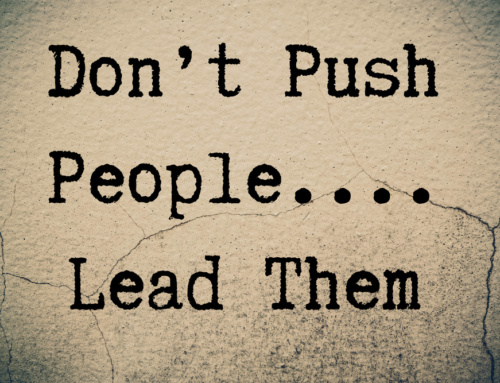Note from Art: I’m traveling with my wife for our 30th anniversary celebration. (Hey, you only live once!) In light of that, I wanted to leave you with some great content from the archives while I’m away.
“Ideas are easy; doing stuff is hard.” –Seth Godin
“Innovation and creativity are emergent, not causal properties of teamwork.” –Jim Highsmith.
Ideas in the workplace that are voiced but never vetted or pursued are the corporate equivalent of those brilliant insights we have in the middle of the night that we don’t bother to write down. “I’ll remember it in the morning,” we think at the time. We rarely do.
 While I’ve marveled at some teams who seemed to thrive on both generating and implementing new ideas, it’s more common to observe situations where good ideas are tossed into discussions, batted about for awhile and then left to evaporate. Sadly, many of these fleeting ideas are suggestions that go to the heart of better serving customers or improving internal efficiencies.
While I’ve marveled at some teams who seemed to thrive on both generating and implementing new ideas, it’s more common to observe situations where good ideas are tossed into discussions, batted about for awhile and then left to evaporate. Sadly, many of these fleeting ideas are suggestions that go to the heart of better serving customers or improving internal efficiencies.
A great idea is a horrible thing to waste.
3 Contributing Causes to Your “Ideas to Actions” Shortfall:
1. There’s no mechanism for people or groups to gain traction for translating ideas into actions.
2. Individuals and teams lack self-confidence in their ability to overcome the feared resistance of management or the gravitational pull of the status quo.
3. Many people are so overwhelmed with their current workload, that ideas are perceived as more work…and not replacements for other work.
Here are some thoughts on helping your team move beyond discussion into action.
7 Simple Ideas to Help Your Team Become Great at Turning Ideas into Actions:
1. Raise the Topic with Your Team. Yes, words are cheap, but in this situation, you must be the evangelizer-in-chief on the need and value of capturing, developing and operationalizing ideas that can fix or improve something.
2. Start Small. Create an “Idea Board” or Idea Log” that is visible to all parties and encourage regular capture and/or expansion of ideas. A whiteboard or flip-chart placed in an open location, and a ready supply of working markers are all that you need to get started. Encourage spontaneous updates…and/or make sure ideas surfaced in meetings are captured and transcribed here.
3. Make an Example Out of Someone or Some Group. In this case, it’s a positive example you’re after. Seize upon an idea suggested in a meeting and encourage the individual(s) to take it to the next level. Offer to serve as sponsor…set a date to review the enhanced ideas, and if it passes your filter of good business, help push the idea and individual(s) into implementation. Socialize the process and status, and celebrate the outcome, whether it’s lessons learned or genuine improvements.
4. Get the Fear Out. No one will do anything interesting or innovative if fear is lurking around the corner. You own exorcising this debilitating force from the working environment.
5. Tackle the “New Ideas Translate to More Work” Issue Head-On. You control the workflow and time demands of your team. If you want an “Ideas to Actions” program to gain traction, you’ve got to help the team identify time and access the resources needed to evaluate, develop and implement new ideas.
6. Introduce Filters to Help Set Priorities. It’s a good problem when the supply of ideas generated and captured outstrips the bandwidth of your team. If your firm has a clear strategy and your team has well-defined goals, align ideas and experiments with these priorities. If not, good, commonsense filters should be focused on things such as: helping customers, beating competitors, reducing costs, enhancing organizational capabilities or some combination of the above. Start prioritizing…but allow the team to challenge and reset the priorities based on the filters. Keep the priorities visible.
7. Build Team Knowledge. Not every idea will turn into a blockbuster new program or lead to great cost reductions and efficiency improvements, however, today’s failure might sew the seeds of tomorrow’s success. Create a process to capture lessons learned and future suggestions, and make the content readily visible and available to all.
The Bottom-Line for Now:
Jump-starting the team’s “Ideas to Actions” machine is an important part of every manager’s job. Both Seth and Jim Highsmith have it right in their opening quotes. You own this. It’s time to fix it.
Get the latest e-book (free) from Art: “A Bold Cup of Leadership Caffeine: Ideas to Stimulate High Performance.”
—
See posts in the Leadership Caffeine™ series.
—
Read More of Art’s Motivational Writing on Leadership and Management at About.com!
—
Art Petty serves senior executives and management teams as a performance coach and strategy facilitator. Art is a popular keynote speaker focusing on helping professionals and organizations learn to survive and thrive in an era of change. Additionally, Art’s books are widely used in leadership development programs. To learn more or discuss a challenge, contact Art.








Leave A Comment